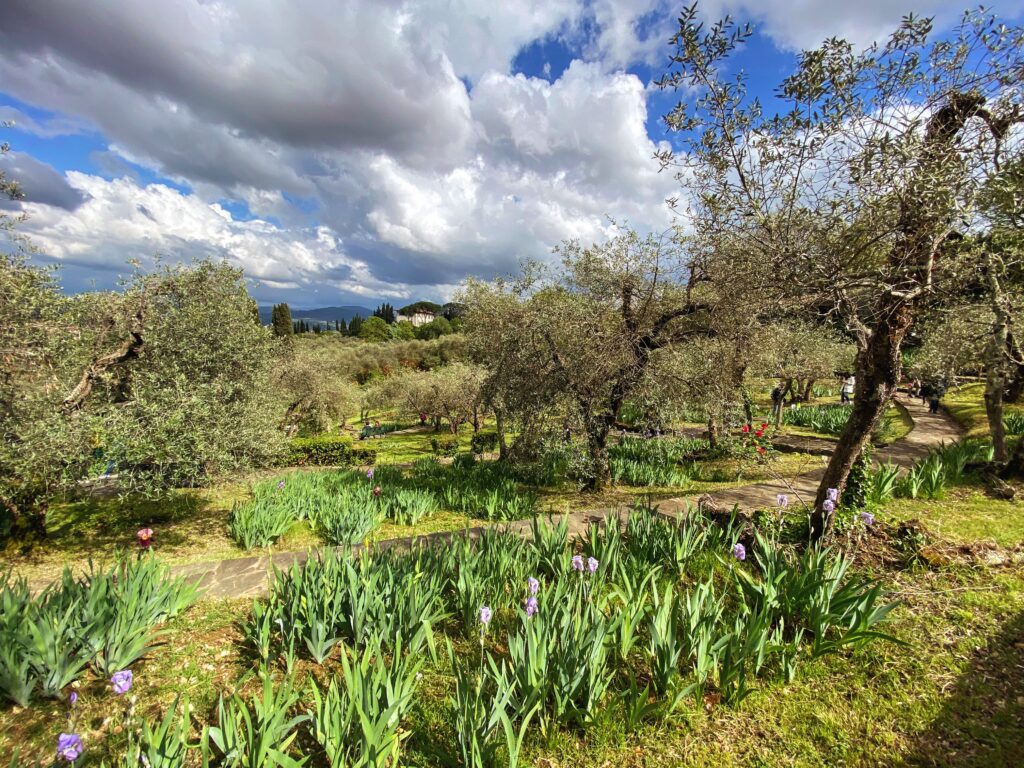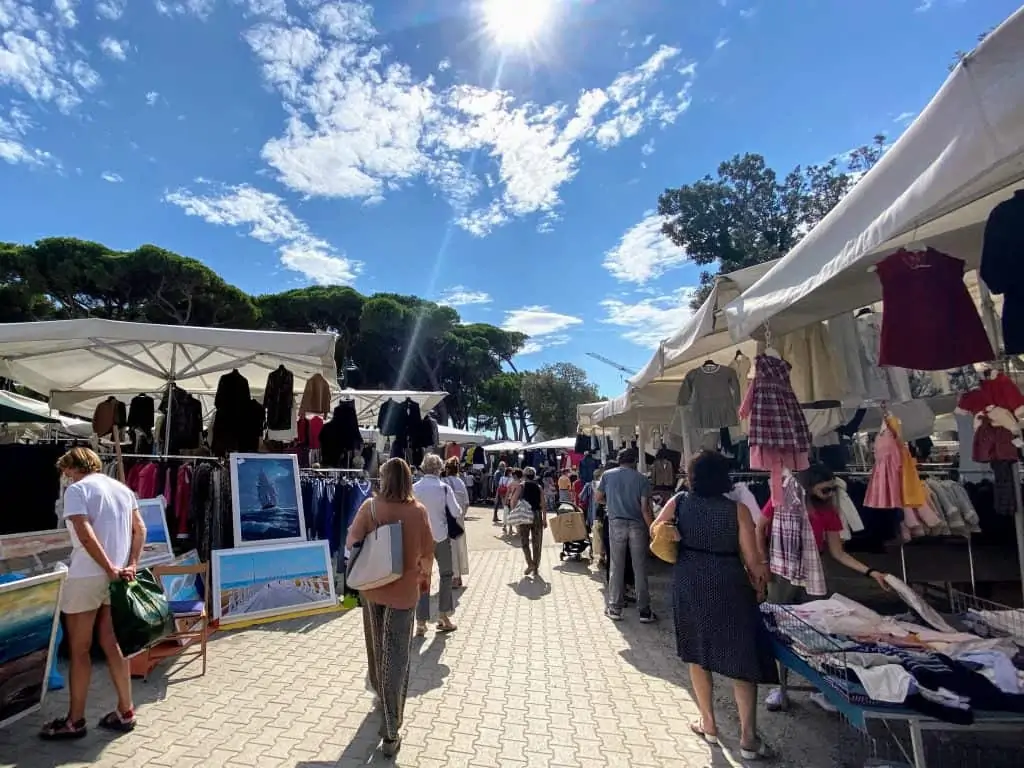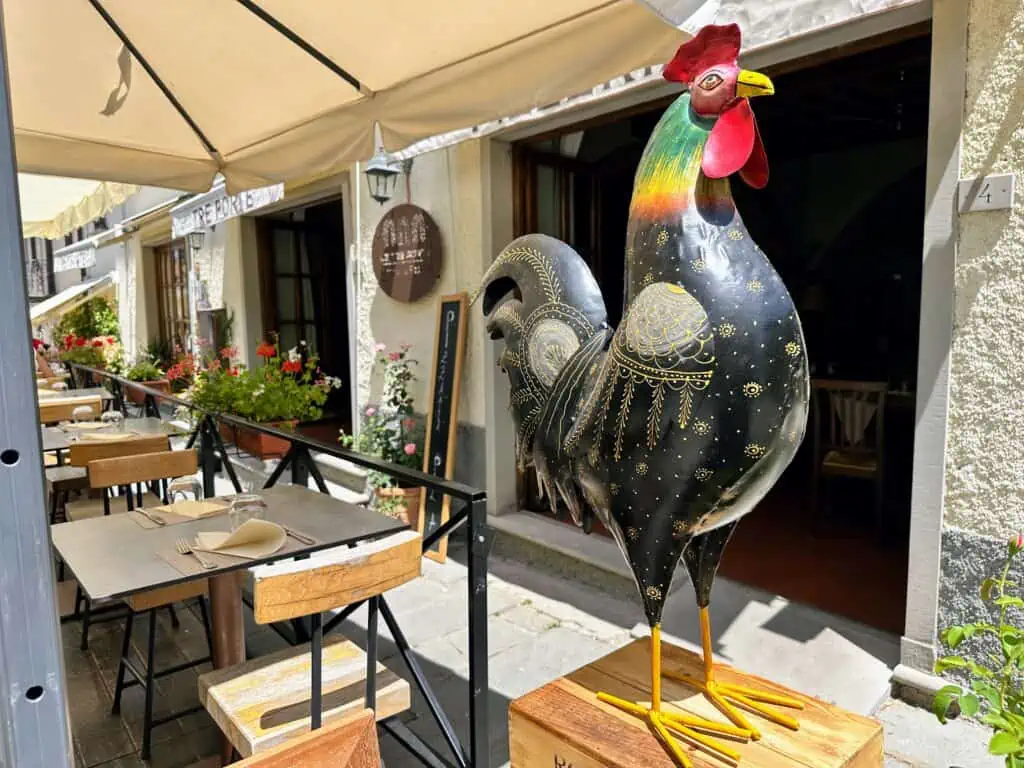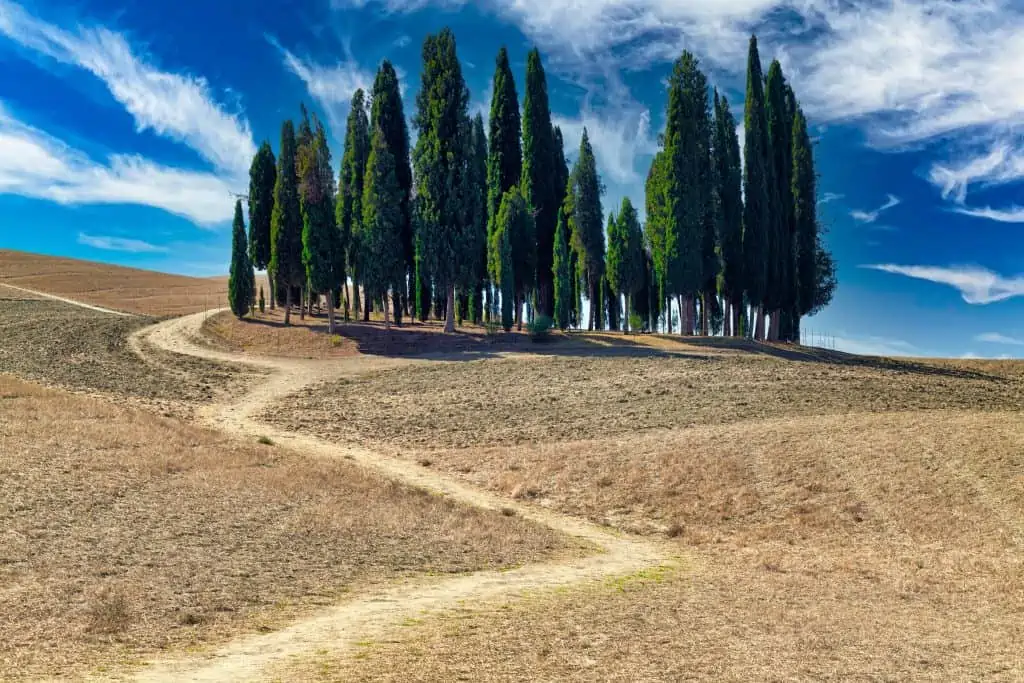While I’m sure you’ll enjoy your time seeing David at the Accademia Gallery and checking out the incredible art in the Uffizi Galleries, make sure you save some time for exploring gardens in Florence.
We’ve got some beautiful gardens in Florence – and they’re excellent places to see plants and flowers (especially in the spring!), rest your legs after walking around the city all day, or have a small picnic or aperitivo.
Fun Fact: A garden in Italy isn’t the place you plant your vegetables. That’s an orto. A garden (giardino) is a planned space for displaying plants and nature. We also use the word giardino to describe our ‘yard’ at home.
Some of Florence’s gardens are only open part of the year, and most are free. While I’ve noted this info below, it’s always best to visit the garden’s official site for the most up-to-date information.
I’ll also list some of Florence’s parks (parchi), which are more green spaces worthy of a stop.
Enjoy your time in Florence’s gardens!
Read more about Tuscany in the Spring
Table of Contents
Map of the Best Gardens in Florence, Italy
Florence, Italy’s Best Gardens
Rose Garden (Giardino delle Rose)
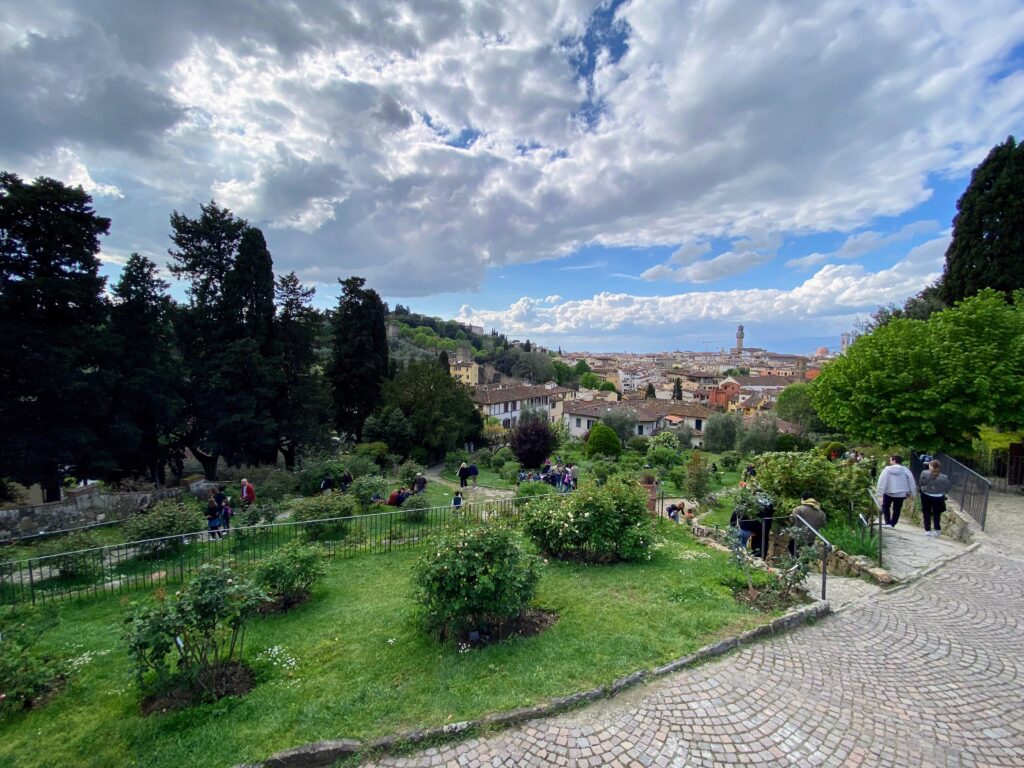
Opened to the Florentine public in 1895, Florence’s Rose Garden (Giardino delle Rose) is one of the best places to sit and relax with a view of the city (including Palazzo Vecchio, Giotto’s belltower, and the Duomo).
There are over 350 species of roses on display, along with other plants like lemon trees. In 2011, twelve interesting sculptures by Jean-Michel Folon were donated to the garden and sprinkled amongst the roses.
It’s free to visit and is open during the year, closing earlier in the winter.
For more details, call the garden at +39 055.2342426.
Location: Next to Piazzale Michelangelo. There are three entrances, and the one that’s always open is on the western side of Piazzale Michelangelo, on Viale Giuseppe Poggi.
When to Visit: May (when the roses are blooming). April and June are also pleasant.
Logistics: Paid toilets; small bar is perfect for aperitivo; not stroller friendly (but possible); benches available or sit in the grass
What to See or Do Nearby: Piazzale Michelangelo, San Miniato al Monte, Iris Garden
Good To Know: There’s not much shade so avoid visiting during the middle of the day in hot summer months. I like to visit in April when the rose bushes aren’t all in bloom, but it’s not as crowded as it gets in May.
Iris Garden (Giardino dell’Iris)
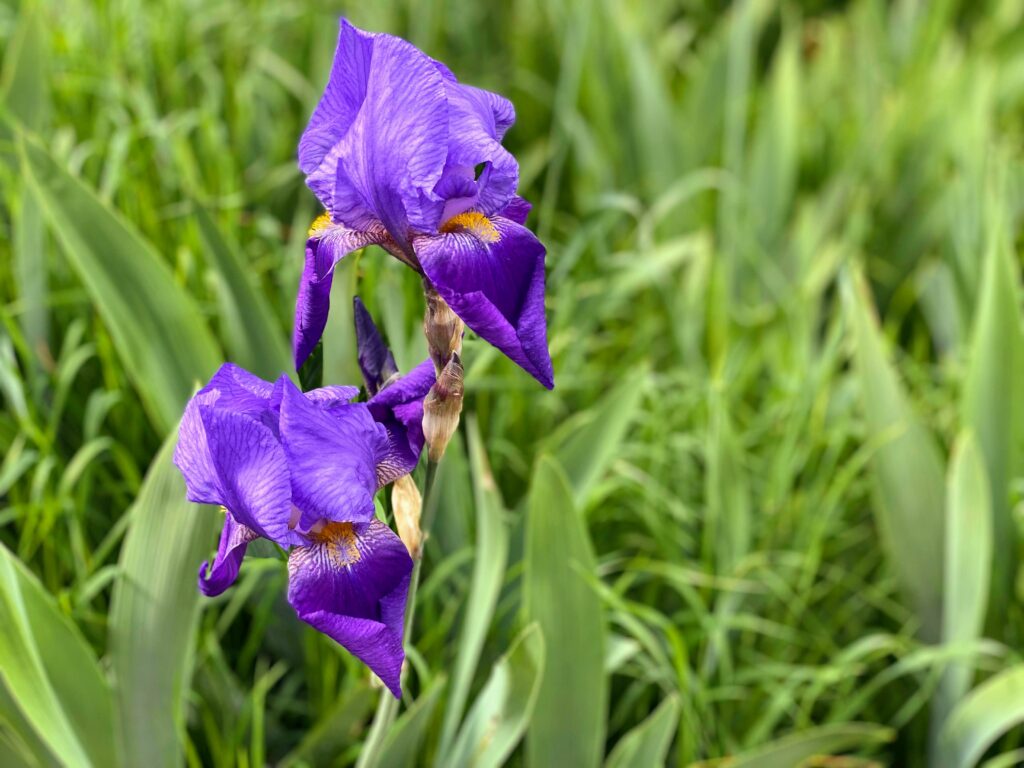
The Iris Garden (Giardino dell’Iris) is a small gem in Florence that’s only open for a few weeks in the spring (usually beginning on April 25th). It’s run by the Italian Iris Society, a group of friendly and passionate iris enthusiasts.
It’s free to visit and worth a stop to explore the small paths and the different species of iris flowers from around the world. There are also beautiful views of Florence.
For more details, visit the official site of the Italian Iris Society.
Location: Next to Piazzale Michelangelo. Enter on the eastern side of Piazzale Michelangelo where it meets Viale Michelangelo.
When to Visit: For the few weeks it’s open from the end of April through late May.
Logistics: Small paths can be slippery; not stroller friendly (but possible, I’ve done it and it’s best to ask someone to open the gate to the right of the entrance)
What to See or Do Nearby: Piazzale Michelangelo, Rose Garden, San Miniato al Monte
Fun Fact: The ‘lily’ that you see all over Florence isn’t actually a lily – it’s actually an iris that you can find growing wild around Florence and its surrounding countryside.
Good To Know: This isn’t really a ‘hang out and relax’ garden. It’s more of a ‘walk the paths, check out the irises, and be on your way.’ I loved my quick 30-minute visit with my mom and son, and we all agreed that was plenty of time. Of course, if you’re a big iris fan, you’ll want to spend more time!
Bardini Garden (Giardino Bardini)
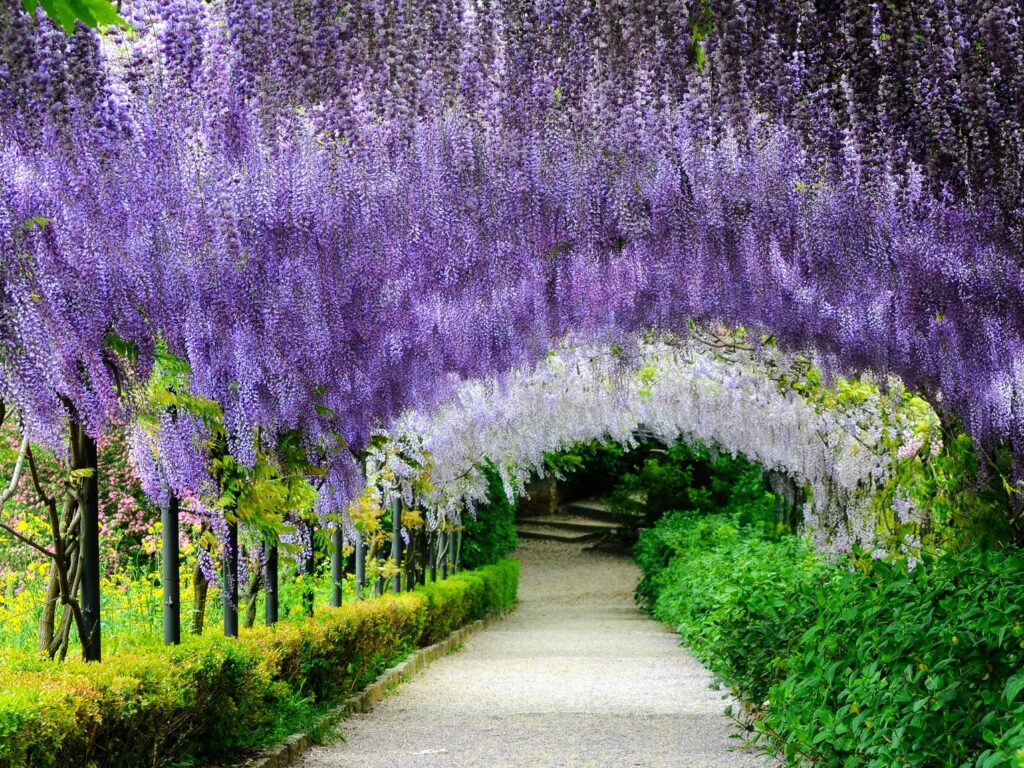
You’ve probably seen an Instagram photo (or ten) of the wisteria in bloom in the Bardini Garden in the spring. While wisteria blossoms are gorgeous anywhere in Italy, they’re particularly beautiful here where they form a lovely tunnel. Pair that with the spectacular views of Florence, and you’ve got a winner.
While the origins of the garden can be traced back to the Middle Ages, we have Mr. Stefano Bardini, an avid antiques collector and former owner of the garden, to thank for the structure of the giardino we see today.
Although you have to pay to get in, it’s a 3-for-1 special – you get to see the English garden, the Italian garden, and the agricultural area with its fruit trees and the wisteria tunnel.
For more details, visit the official website.
Location: Costa San Giorgio, 2 (main entrance), or Via dei Bardi, 1. It’s located in the Oltrarno (other side of the Arno River from the historic center). It’s all uphill to get there, so leave your stilettos at home.
When to Visit: To see the wisteria in bloom, visit in late-April. Otherwise, the garden and views are worth a visit any time of the year.
Logistics: Not stroller friendly (but possible); great place for a coffee, lunch, or aperitivo – La Loggia, open spring through fall; toilets
What to See or Do Nearby: Galileo’s House, Boboli Gardens
Good To Know: The Bardini Garden is free to visit on the first Sunday of each month. The entrance fee includes the Boboli Gardens.
Boboli Gardens (Giardino di Boboli)
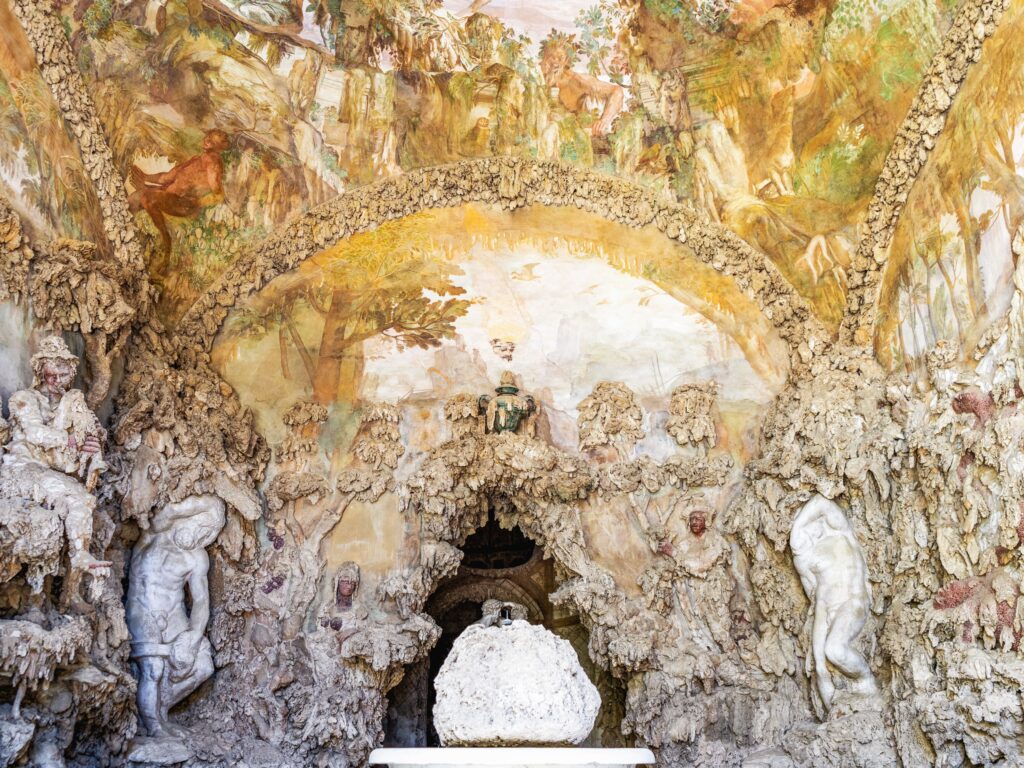
Florence’s most famous garden, the Boboli Garden (aka Boboli Gardens and Giardino di Boboli) were created for the Medici family and opened to the public in the 1700s. The garden boasts sculptures, fountains, and lovely views of Florence.
Don’t miss the Grotta Grande, which originally held Michelangelo’s ‘Prisoners,’ which are now on display in the Accademia Gallery, framing the path to his ‘David’ statue.
Get the latest info on the official website of the Boboli Gardens. And read our Guide to Visiting Boboli Gardens with Kids.
Location: The backyard of the Pitti Palace, on the south side of the Arno River (Oltrarno).
When to Visit: Anytime of the year. It’s beautiful in the sunshine and when the skies are grey. It has benches and shady areas so you can escape from the heat for a bit in the summer.
Logistics: Stroller friendly; toilets; water fountains; restored Kaffeehaus café offers drinks with a view, open from spring through fall
What to See or Do Nearby: Palazzo Pitti, Bardini Garden, Galileo’s House, Piazza Santo Spirito
Fun Fact: The Boboli Gardens were one of the first examples of the Italian garden style.
Florence Horticulture Garden (Giardino dell’Orticoltura)
If you make your way to the Horticulture Garden, you’ll find more Florentines than visitors – people out walking their dogs, children running around the playground, families having picnics, students reading, and couples enjoying time together.
Not on the ‘must-see’ list for Florence, but nice if you’re looking for something local, and kids will love the dragon/serpent statue.
Location: North of the historic center, between the Statuto and Le Cure neighborhoods.
When to Visit: Year-round
Logistics: Stroller friendly; café; drinking fountain; playground
What to See or Do Nearby: Baden Powell Gardens, Stibbert Museum
Fun Fact: On the upper part of the hill you’ll find the large statue of the dragon/serpent and lovely views of Florence.
Torrigiani Garden (Giardino Torrigiani)
The Torrigiani Garden is an enormous, privately-owned (by the Torrigiani family) garden in the historic center near Porta Romana. It’s not open to the public, but you can visit on a private guided tour or during giardini aperti (open garden) events during the year.
Or, stop in on a summer evening for a magical experience at a concert or aperitivo at the garden’s Serre Torrigiani Bistrot (order the basil cocktail!).
Learn more about the Torrigiani Garden on its official website.
Location: Near Porta Romana, on the south side of the Arno River (Oltrarno)
When to Visit: Beautiful on a summer evening (at the Serre Torrigiani Bistrot) or whenever you can arrange a private guided tour.
Logistics: Stroller friendly; toilets at the Bistrot; easy parking in the adjacent Porta Romana lot (if you’re not already staying in Florence)
What to See or Do Nearby: Boboli Gardens, Palazzo Pitti, Piazza Santo Spirito
Good To Know: You can also enjoy the gardens from rooms at the boutique hotel, Ad Astra.
Gherardesca Gardens (Giardino della Gherardesca)
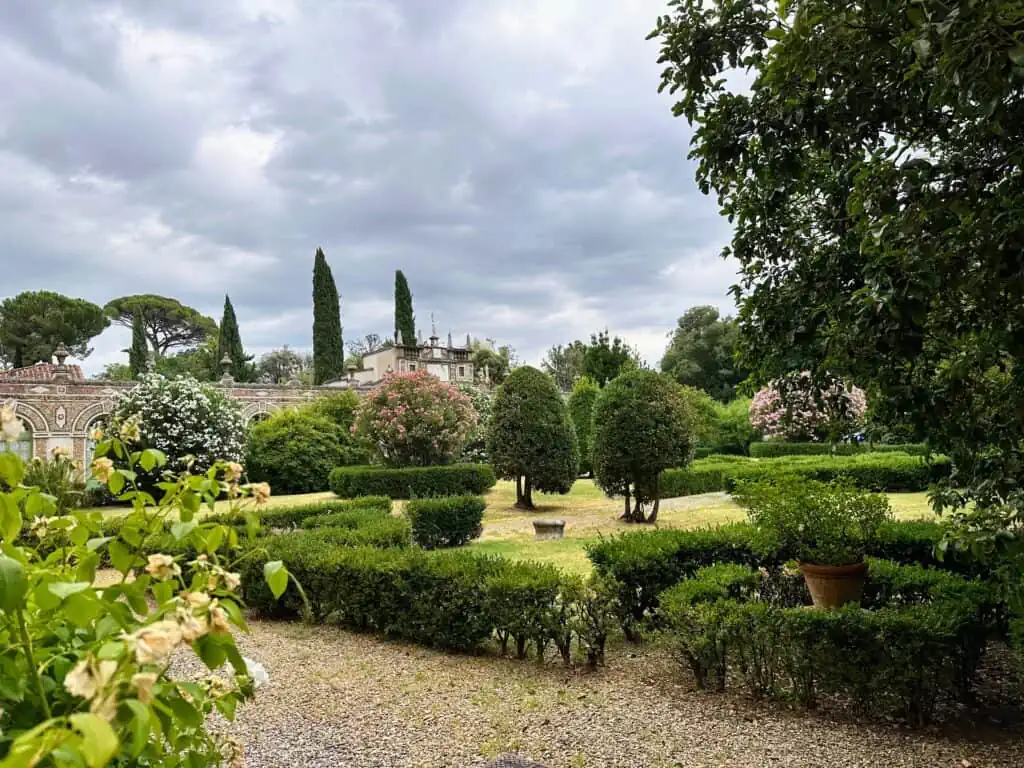
The Gherardesca Gardens, like the Torrigiani Gardens, are somewhat hidden in the center of Florence. They’re on the property of Florence’s Four Seasons Hotel, which has its rooms in the Palazzo della Gherardesca. It contains beautiful, tall trees, flowers, statues, and fountains. Small paths are perfect for a morning or afternoon stroll.
Location: They’re a part of the Four Seasons Hotel.
When to Visit: You can visit on open days (we’ve been during the winter when they have charity events to raise funds for children) or for Sunday brunch (so delicious and in a gorgeous setting, especially in the spring).
Logistics: Toilets inside the hotel; stroller friendly; stop for a meal, afternoon tea, or aperitivo in the Atrium Bar
What to See or Do Nearby: Accademia Gallery, Jewish Synagogue and Museum
Fun Fact: These gardens were the first in Florence to house mandarin orange trees.
Baden Powell Gardens (Giardini Baden Powell)
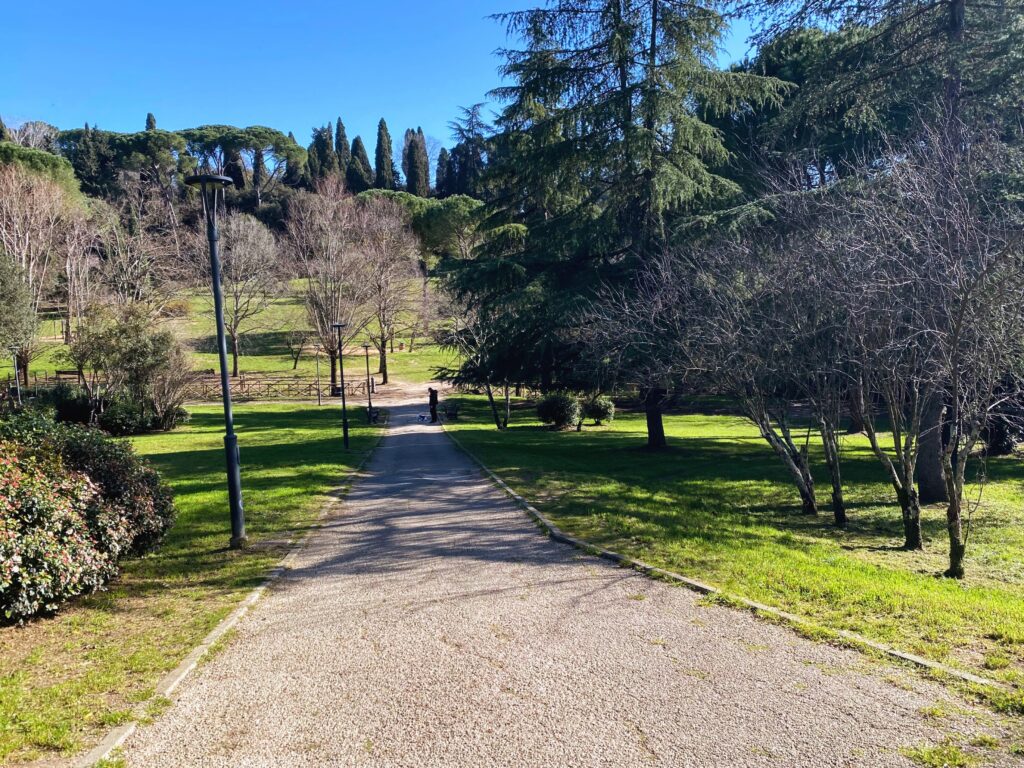
This garden isn’t in the center, so it’s not as easy to get to, but I wanted to include it because it’s a nice garden full of Florentine families and locals. Parts of it all full of green grass, which is perfect for a picnic on a summer day, and there’s a small café if you want to grab a drink or a quick meal.
There’s a children’s playground, and a small, shaded forest in the adjacent Stibbert Museum Garden.
I wouldn’t put it on my list of ‘must-sees’ in Florence, but if you’re in town for a few days and want a place to relax, especially with kids, this is a great place.
Location: North of the historic center, between the Statuto and Le Cure neighborhoods.
When to Visit: Year-round, but we love it in the spring and early summer, when the grass is green.
Logistics: Toilets inside the bar at the Stibbert Museum; stroller friendly; water fountain by the playground entrance
What to See or Do Nearby: Horticulture Garden and the serpent/dragon statue
Fun Fact: The garden is next to the Stibbert Museum, which houses an incredible collection of armor and other treasures. It’s one of our family’s favorite museums in Florence. Read more about the Stibbert Museum.
Best Florence Gardens to Visit with Kids
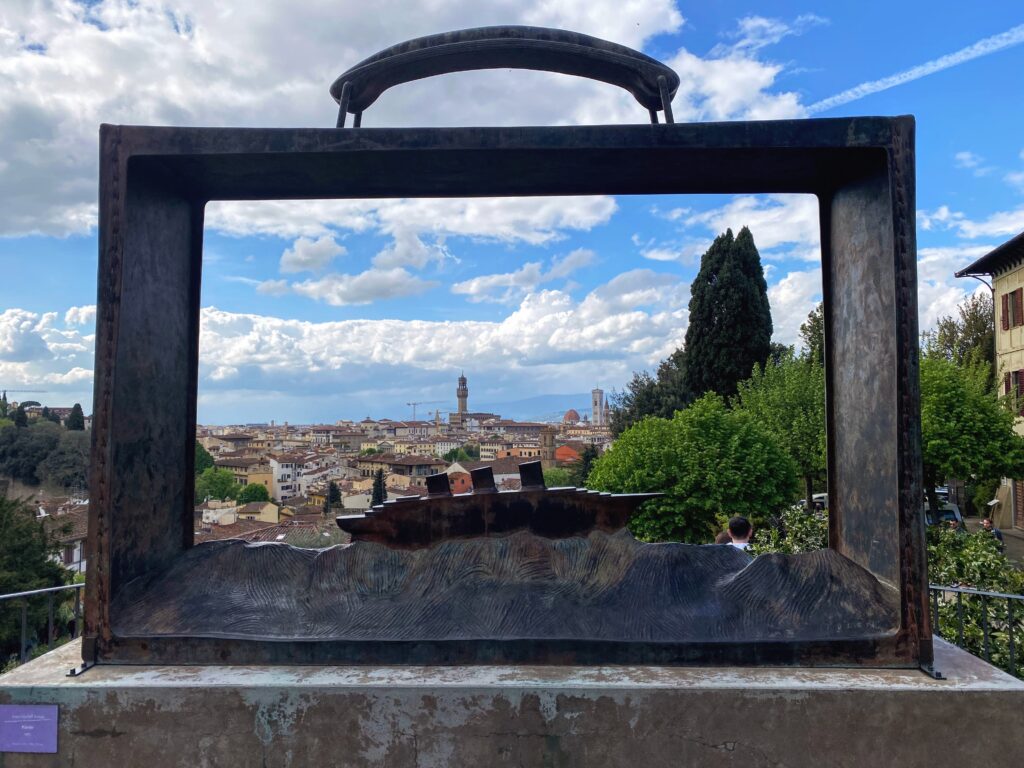
Kids love to run around in the gardens – especially those with a playground. Most of Florence’s gardens don’t have playgrounds, but they do have fun things for kids to seek out. Some of our favorite gardens in Florence for kids include:
- Horticulture Garden – marvel at the dragon/serpent statue; play at the playground
- Rose Garden – art, fish, statues, views; good spot for a picnic
- Iris Garden – good for a quick garden visit; kids enjoy walking the narrow path and finding their favorite irises
- Boboli Gardens – find the little person on the tortoise, explore the Grotta Grande, run around the large space
- Gherardesca Gardens – nearby is Piazza Massimo d’Azeglio, home to one of Florence’s most popular playgrounds for local families
- Baden Powell Gardens – little kids love the playground; big kids enjoy the large green space; the adjacent Stibbert Museum is a knight and armor enthusiast’s dream come true
Read more about Visiting Florence with Kids.
What About the Cascine?
Florence’s largest green space is the Parco delle Cascine (Cascine Park), just to the west of the city center. It’s full of walking, jogging, and cycling paths, small playgrounds, and plenty of grassy areas for relaxing, having a picnic, or playing soccer.
There are beautiful plants and trees throughout the park.
I didn’t include the Parco delle Cascine on this list because it’s a park that’s open to the public, not a closed garden space that has opening hours.
I hope you enjoy your time in Florence’s gardens!
Gardens in Florence, Italy – FAQ
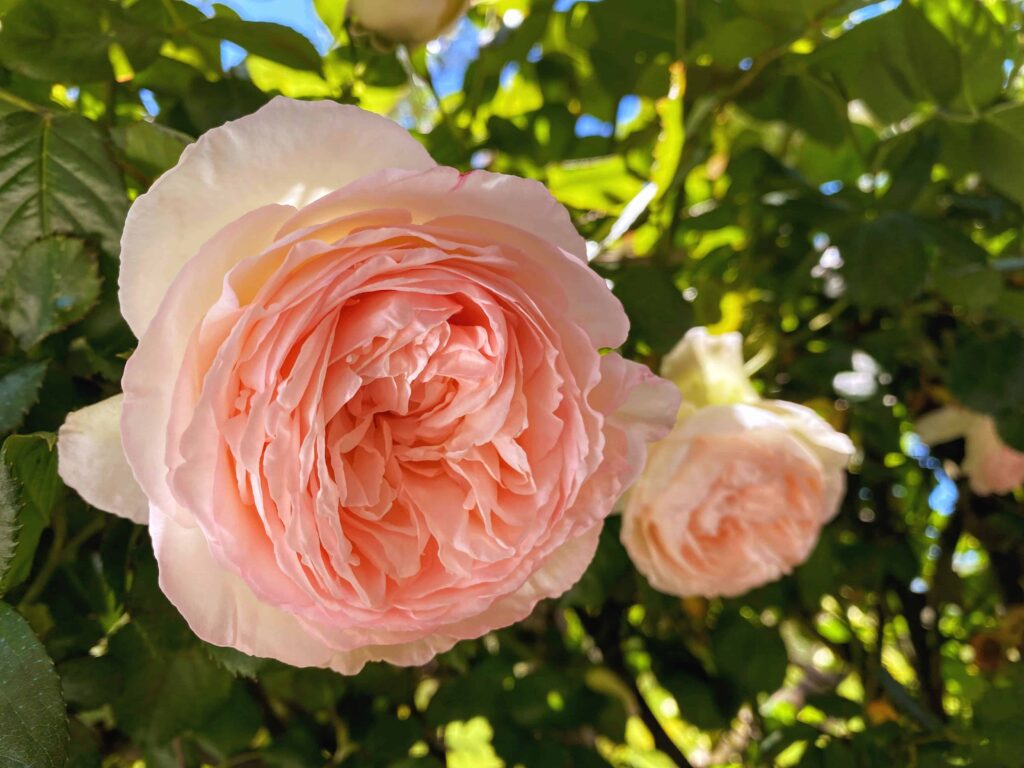
If you’re driving to Florence and you want to see the Iris Garden, the easiest place to park is in the adjacent Piazzale Michelangelo. It’s pay and display parking – pay at the parking machine and place the ticket on your dashboard.
If you’re driving to Florence and you want to see the Rose Garden, the easiest place to park is in the adjacent Piazzale Michelangelo. It’s pay and display parking – pay at the parking machine and place the ticket on your dashboard.
